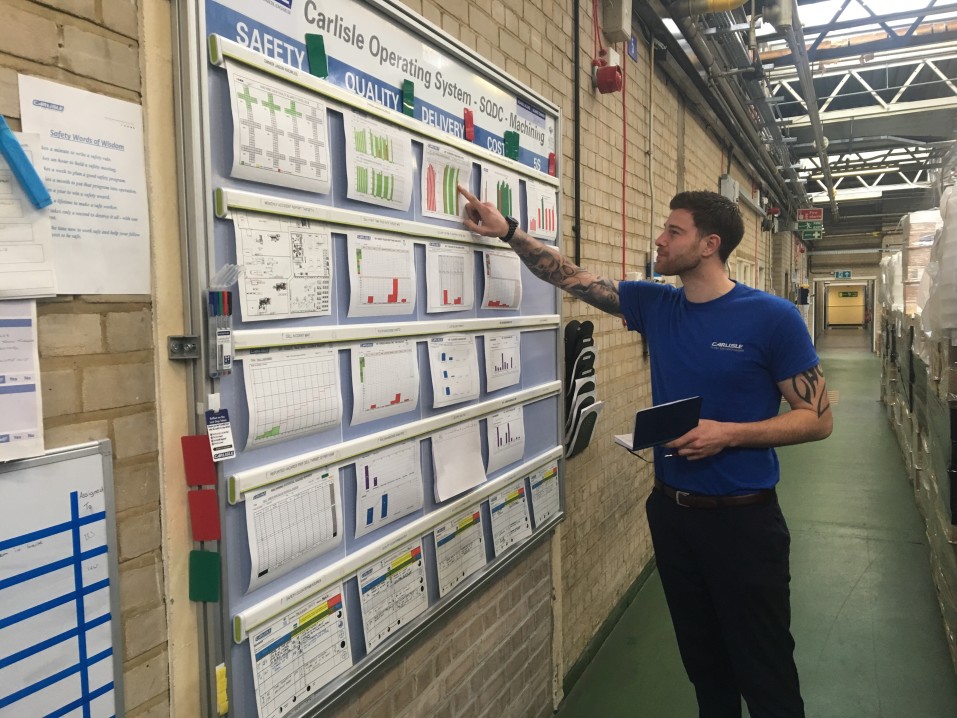For our first Blog post, we like to share this article titled “The Next level of Six Sigma”. We hope you appreciate and keep following our blog and social media channels.
When Motorola introduced their Six Sigma quality methodology in 1986, their goal was clear…
They want to connect a 3.4 PPM quality level to both increased customer satisfaction and improved corporate earnings.
They built a system that tied data-driven decision making into every facet of managing the company and in the process.
Now, created an industry revolution that continues to be the foundation for many companies’ quality programs today.
Since then, it converted in the next level of Six Sigma
Six Sigma introduced several management advantages for Motorola:
- It tied decision making to a clear definition of goals aimed at bottom line improvement.
That process allowed Motorola to streamline their project prioritization and eliminate many programs that would take time and money but not show sufficient earnings impact. - It introduced an “attainable goal” review to help teams understand the elements of a challenge they could control and avoid “boiling the ocean” in trying to eliminate all variability.
- Its education system rewarded the mastery of various quality management capabilities with the ultimate awarding of the Six Sigma Black Belt.
This simple but powerful idea gave employees a continuous improvement process with clearly defined award levels. - It tied customer satisfaction to the daily management of Motorola’s manufacturing processes.
- It built its measurement systems on a foundation of data rather than subjective ideas (bringing to mind the great quote of W. Edwards Deming’s, “Without data, you are just another person with an opinion.”)
- It connected quality levels to financial return. Motorola featured Six Sigma in its shareholder meetings as a differentiator in driving corporate value.
Some of history
When Jack Welch, then the CEO of General Electric, was exposed to Six Sigma he instantly understood the power of the process and quickly moved to adapt its principles throughout the GE organization.
GE claimed that Six Sigma saved their company over $8 Billion in a 4-year period.
This, from the start of 1999 through the end of 2002.
It is interesting to note that Motorola and GE were both applying their Six Sigma methodologies to product lines that could afford the investment to run the programs correctly.
In 1986, customers were willing to pay for the higher quality electronics and communication products Motorola was producing.
And GE was applying their Six Sigma programs in the 90’s and early 2000’s to the production of medical equipment, jet engines and locomotives where higher quality could command higher prices.
As Six Sigma has matured and expanded into all kinds of other businesses, its limitations have been exposed as the costs of implementing the program can challenge its bottom line effectiveness:
- Meeting the statistical goals of Six Sigma may require some companies to invest in better, higher cost manufacturing equipment.
Capital expenditures and debt service can offset bottom line gains if the company cannot command higher prices for its products. - Six Sigma requires a management infrastructure that can add layers to your organization and increase your headcount costs.
- As Six Sigma has expanded to cover many industries, the rigor of its implementation has suffered in some instances.
The result is poor prioritization of projects and work done on processes that don’t meet the “attainable goals” criteria or cannot really generate the customer satisfaction or bottom line results promised by the program. - In many companies, the “data-driven” foundation of Six Sigma is challenged by the lack of data collection efficiency and/or the inability to adequately analyze the data in a timely manner.

We, at Forccia we see this last point – data collection and analysis – as the turning point for handling all of the other challenges of Six Sigma.
As a matter of fact, we will go so far as to say that the management of manufacturing data is about to change the way we think about the quality and its connection to customer satisfaction and our companies’ bottom lines.
Manufacturing data is changing in three key ways:
- Sensors in machining centers and assembly processes are reducing in price and increasing in the sophistication of what they can measure.
- New shop floor data communication programs are being introduced that connect quality data directly to operators on a real-time basis.
- The role of Artificial Intelligence is growing to foster machine learning that will automatically adapt to suppress quality variation as it occurs.
Companies driving the data revolution
Data Collection
Trumble Inc.
The folks at Trumble have automotive industry backgrounds.
Their Reveal™ shop floor data system is being used in engine and transmission manufacturing plants to push synthesized information on a real-time basis directly to dedicated cell phones used by machine operators.
As quality variation is detected by sensors on machining centers, alerts showing the high and low limits of the control range show operators that adjustments are necessary – all without the need of data mining or analysis.
The result is a very high adoption and “buy-in” rate of machine operators and department managers on the factory floor.
Bosch – Rexroth Active Cockpit
When Rexroth merged with Bosch’s manufacturing equipment division in 2001 they formed a team dedicated to data collection in every step of the manufacturing process.
Today, they are positioning their product line for Industry 4.0 with products like Rexroth’s ActiveCockpit and the Nexo wireless-enabled nut runner.
In ActiveCockpit, Rexroth collects real-time manufacturing data, processes it and presents it on shop floor screens that are also connected to back-end systems such as the company’s enterprise resource planning and manufacturing execution systems.
In some plants the system can eliminate all manual data collection and also compare plants around to world to each other to benchmark best practices.
Collecting torque readings from nut runners has been done for many years, but the Nexo wirelessly-enabled nut runner takes the torqueing process to a whole new level.
Nexo visualizes, monitors, and documents process data in real time building a cloud-based database for all of the nut runners on an assembly line. The cloud database can be easily integrated into other company systems.
Plex
The Plex company has grown to become one of the leaders in manufacturing ERP systems and has established its Manufacturing Cloud as its approach to Industry 4.0.
Also, Plex has partnered with Shoplogix to collect machine-level data so shop floor managers can see roadblocks, quality variance and process inefficiencies and its IntelliPlex program provides data analytics and reporting applications to make it easy to generate drill-down reports.
Now, Plex benchmarks over 400 companies running 1300 facilities around to world for its online manufacturing community.
Factivity
Factivity specializes in manufacturing execution systems based on strong shop floor data collection and intuitive operator user interface.
They use a touch screen approach that eliminates the need for bar code readers and provides a completely paperless work order and job packet process.
We recommend Factivity’s MES white papers
Supply Chain Visibility
Elm Analytics
Elm Analytics has created a profile on over 30,000 suppliers to the automotive industry by getting companies to subscribe to their Numerus™ database.
Subscribers provide profile information on their company in return for the ability to view thousands of supplier companies. Typical information includes
- Overview of ownership and products
- Key contacts
- Global footprint
- Manufacturing footprint – capacity, employees, floor space
- Suppliers to the subject company
- Production summary
- Global transportation
- Risk assessment
Today, Elm handles only automotive manufacturing plants but their API could easily be applied to any other global industry. The suppliers create the content for the database.
Resilinc
Resilinc bills itself as “the LinkedIn for the supply chain community”.
They track the information of over 81,000 suppliers to offer resiliency scores for manufacturers seeking new supply partners.
Summary
Eventually, artificial intelligence systems will use data feed back loops to automatically adapt machining centers to changing quality parameters.
Ultimately, additive manufacturing centers will simply print perfect parts. Until that time and in future, Forccia stands ready to be your perfect quality liaison partner.
Thanks for reading our first post titled “The Next Level of Six Sigma”.
Do not hesitate to Contact Us here, and post you opinion about this article.
We hope you see you soon.
